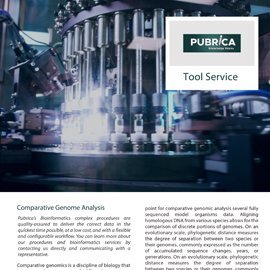Protein Structure Prediction
Pubrica’s Bioinformatics complex procedures are quality-assured to deliver the correct data in the quickest time possible, at a low cost, and with a flexible and configurable workflow. You can learn more about our procedures and bioinformatics services by contacting us directly and communicating with a representative.
It is difficult to predict a proteins three-dimensional shape from its amino acid sequence is one of the most critical unsolved difficulties in biophysics and computational biology. It provides a complete overview of recent protein structure prediction efforts and progress. Related topics and methodologies are provided and addressed after the general flowchart of structure prediction. In addition, concise overviews of many commonly used prediction methods and community-wide critical assessment of protein structure prediction (CASP) experiments are provided. The goal of protein structure prediction and engineering design is to reduce the enormous gap between sequence and structure space. The approaches for predicting protein structure can be divided into three categories: (1) ab initio methods, (2) threading, and (3) homology modeling. The ab initio (de-novo) approaches are based on first-principles physics and chemistry laws and the concept that the natural structure is always at the lowest energy level. Modeling a protein sequence with more than 150 residues using this method can be challenging.
Our comprehensive Bioinformatics Database services
Types of Bioinformatics: We undertake commonly used prediction methods and community-wide critical assessment of protein structure prediction (CASP) experiments are provided.
Wide range of Sources: NCBI, BLAST, Pubmed, Pubmed Nucleotide, Pubmed Protein, Pubmed Gene, Pubmed Sequence.
Let experts support you’re Bioinformatics Research.
We’ll scale
up as your needs grow.
No compromising on integrity and quality. Our processes are well defined and flexible to ramp up as per your requirements.
Partnering with
you till the project end.
We come with you all the way. From design to market support

Pubrica Offerings
Pubrica provides comprehensive bioinformatics research work publishing assistance for various publications, journals, and books. With our writing services, you can now turn your ideas into Project writing, Proposal writing, Research Writing, Thesis writing and Manuscript writing. Science, Technology, Engineering, and Mathematics (STEM) experts with a therapeutic background. It is now simple to publish a research work or obtain regulatory drug approval. With Pubrica's help, you can save time and money.
Frequently asked questions
We are with you the whole nine yards. In this section, we answer the tough questions. For any information, contact us via +91-9884350006 meanwhile, here are some of those queries
Bioinformatics tools extract useful information from many molecular biology and biological databases and perform sequence and structural analysis. Bioinformatics tools aid in the comparison, research, and interpretation of genetic and genomic data.
To predict the 2D structure of a protein molecule, a variety of tools are available. E.g. ExPASy (the Expert Protein Analysis System), developed by the Swiss Institute of Bioinformatics, is one of the essential tools (SIB).
Pubrica will provide a particular time; it depends upon your research work. We're here to help you understand the work you've done and respond to any questions you could have. You can contact us at any time, even after your service has ended.
Homology-based approaches predict a gene by aligning a protein (or RNA sequence in the form of full-length mRNA, cDNA, or EST) with the genome sequence to be annotated. The prediction is influenced by the known sequence (also known as evidence).
Proteomics data analysis, Comparative genomics, Functional genomics, Phylogeny in the protein evolutionary process, and Protein modeling are all examples of bioinformatics being used to predict the function of actual gene products.


